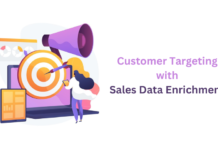You know what they say: the best offense is a good defense. And when it comes to marketing, this age-old adage still rings true. After all, your marketing strategy is what will determine whether your business sinks or swims. By having a solid plan in place, you can avoid making common mistakes and set your company up for success. Not sure where to start? Don’t worry, we’ve got you covered. In this blog post, we’ll show you how to create a successful marketing strategy using HubSpot’s guide.
Define Your Target Market
In order to create a successful marketing strategy via a HubSpot Marketing Agency, you need to first identify and define your target market. This can be done by conducting market research to segment your audience and understand their specific needs and wants. Once you have a clear understanding of your target market, you can then create targeted marketing campaigns that are designed to reach and engage them.
It’s important to remember that your target market is not static – it can change over time as your business grows and evolves. Therefore, it’s important to periodically review your target market and make sure that your marketing strategy is still aligned with their needs.
Research Your Competitors
Before you can begin to develop your own marketing strategy, you need to understand what your competitors are doing. Researching your competition should be an ongoing and necessary part of your job as a marketer.
There are several ways to research your competition. The most obvious way is to simply Google them. But this only gives you a surface-level understanding of their marketing efforts.
To really get inside their heads, you need to go beyond Google. Try these methods:
- Set Up Google Alerts for Your Competitors: This way, any time they’re mentioned online, you’ll be notified. You can then read the article or blog post to see what they’re up to and how people are reacting to it.
- Follow Them on Social Media: This will give you an idea of the kinds of content they’re sharing, the tone they’re using, and how often they’re posting.
- Sign Up for Their Email Newsletter This will give you insight into the messaging they’re using and what kind of offers they’re making to their customers.
- Attend Their Events (If Possible): This is a great way to see firsthand what they’re doing and how they’re interacting with their audience. Plus, it’s always good to network!
- Read Their Blog: This is an excellent source of information about their products, services, and industry in general. Plus, it’s a great way to see what kind of tone they’re using and what kind of topics they’re covering.
Once you have a good understanding of what your competitors are doing, you can begin to develop your own marketing strategy.
Define Your Target Audience
The next step in developing your marketing strategy is to define your target audience. This might seem like a no-brainer, but it’s actually one of the most important steps in the process.
Why is it so important? Because if you don’t know who you’re marketing to, you won’t be able to develop an effective marketing strategy.
Think about it this way: let’s say you’re selling a new type of toothbrush. Who are you going to market it to? Dentists? Dental hygienists? Consumers? The answer is all of the above. But each group will require a different marketing approach.
The same is true for any product or service. That’s why it’s so important to take the time to really define your target audience. Once you know who you’re marketing to, you can begin to develop a marketing strategy that will resonate
Set Marketing Goals
Setting marketing goals is essential to a successful marketing strategy. Without goals, you won’t be able to measure your progress or determine whether your marketing efforts are successful.
There are a few things to keep in mind when setting marketing goals:
- Be Specific: Vague goals won’t give you the data you need to track your progress. Make sure your goals are specific and measurable.
- Set Realistic Goals: It’s important to set ambitious yet achievable goals. If your goal is too lofty, you’ll be discouraged when you don’t reach it. On the other hand, if your goal is too easy, you won’t challenge yourself enough to see real results.
- Time-Bound: Every goal should have a deadline attached to it so that you can stay on track and measure your progress over time.
Some examples of marketing goals include:
- Increasing website traffic by X% within 3 months
- Generating X leads within 2 months
- Converting X% of leads into customers within 6 months
Choose Your Marketing Channels
There are a lot of marketing channels out there. So how do you know which ones to use?
The answer is that it depends on your business and your goals. There’s no one-size-fits-all answer, but there are some general principles you can follow.
Here are a few things to keep in mind as you choose your marketing channels:
- Start with Your Audience: Who are you trying to reach? What kind of people do you want to attract? Your answers to these questions will help you narrow down the list of potential marketing channels.
- Consider Your Budget: How much money do you have to spend on marketing? This will obviously affect your choices, so it’s important to consider it from the outset.
- Decide What You Want to Achieve: What are your goals? Do you want to increase brand awareness? Drive traffic to your website? Generate leads? Convert customers? Once you know what you want to achieve, you can start thinking about which channels will be most effective for reaching those goals.
Create Compelling Content
When it comes to content, quality trumps quantity. In order to create compelling content that drives results, your content must be well-researched, relevant, and engaging.
To get started, take some time to understand your target audience and what type of content they are looking for. Once you have a good grasp on this, you can start brainstorming ideas for blog posts, infographics, eBooks, and more that will resonate with your readers.
When creating your content, be sure to keep SEO in mind. Use keyword-rich titles and descriptions to help your content rank higher in search engines and attract more organic traffic.
Finally, don’t forget to promote your content once it’s published! Share it on social media, email it to your list subscribers, and reach out to influencers in your industry who may be interested in sharing it with their audiences.
Analyze and Refine Your Results
After you’ve completed your marketing strategy and set some goals, it’s time to analyze your results. This is where you’ll take a close look at your campaigns and figure out what’s working and what isn’t.
To do this, you’ll want to track some key metrics. For example, if you’re running a social media campaign, you’ll want to track engagement (likes, comments, shares). If you’re running an email campaign, you’ll want to track open rates and click-through rates.
Once you have this data, it’s time to start refining your campaigns. If something isn’t working, figure out why and make changes accordingly. If something is working well, keep doing it! By constantly analyzing and refining your results, you’ll be able to fine-tune your marketing strategy for maximum success.
Conclusion
Marketing is an essential piece to any successful business strategy, and HubSpot’s guide provides a great starting point for businesses of all sizes. By following their advice, you can create a marketing strategy that is tailored to your specific business goals and audience. Additionally, their tips on how to measure success ensure that you will be able to track your progress and adapt your strategy as needed. So what are you waiting for? Get started on creating your own successful marketing strategy today!



















